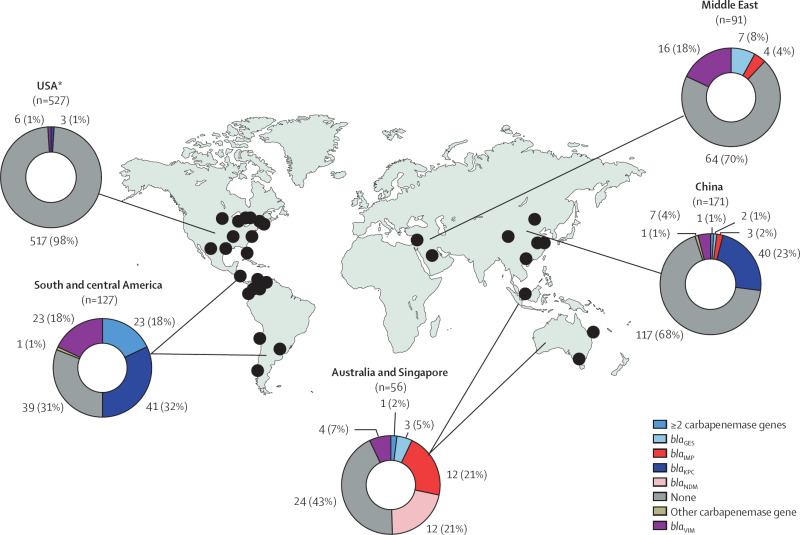Amid the escalating battle against antibiotic resistance, a not-so-famous bacterium called 𝘒𝘭𝘶𝘺𝘷𝘦𝘳𝘢 𝘪𝘯𝘵𝘦𝘳𝘮𝘦𝘥𝘪𝘢 has drawn the attention of researchers worldwide. This organism, typically found lurking in both clinical and environmental niches, has now been found to possess and spread genes resistant to carbapenems—antibiotics often held in reserve for the most stubborn infections.
A comprehensive study analyzed 85 genomes of 𝘒𝘭𝘶𝘺𝘷𝘦𝘳𝘢 𝘪𝘯𝘵𝘦𝘳𝘮𝘦𝘥𝘪𝘢 from various sources across different continents. The concerning discovery? A significant number of these strains contained carbapenem resistance genes—over 30% tested positive for bla KPC-2, while about 16% carried the bla KPC-3 gene. To make matters worse, these bacteria are not just hoarding resistance against one class of antibiotics. They also harbor genes for resistance to colistin, with several strains containing mcr-9.1, mcr-10.1, mcr-9.2, and mcr-1.1 genes. They also possess genes for resistance against colistin, another critical group of antibiotics used when others fail.
These findings highlight a disturbing trend: our last-resort antibiotics are under threat from bacteria that can travel undetected through environments like hospitals, waterways, and even our food supply. The ubiquity of these resistant bacteria underlines a dire need for integrated health strategies—where human, environmental, and animal health sectors join forces.
The call to action is clear—immediate global collaboration is essential to track these resistant strains, regulate antibiotic use, and educate everyone from health professionals to the public on prudent antibiotic practices. We need to protect our antibiotics to ensure they remain effective for future generations. Without concerted efforts, the efficacy of these life-saving drugs might just dwindle in the face of bacteria like 𝘒𝘭𝘶𝘺𝘷𝘦𝘳𝘢 𝘪𝘯𝘵𝘦𝘳𝘮𝘦𝘥𝘪𝘢, th=e stealthy spreader of resistance.
Link to the article : http://tinyurl.com/yv6zwd96
